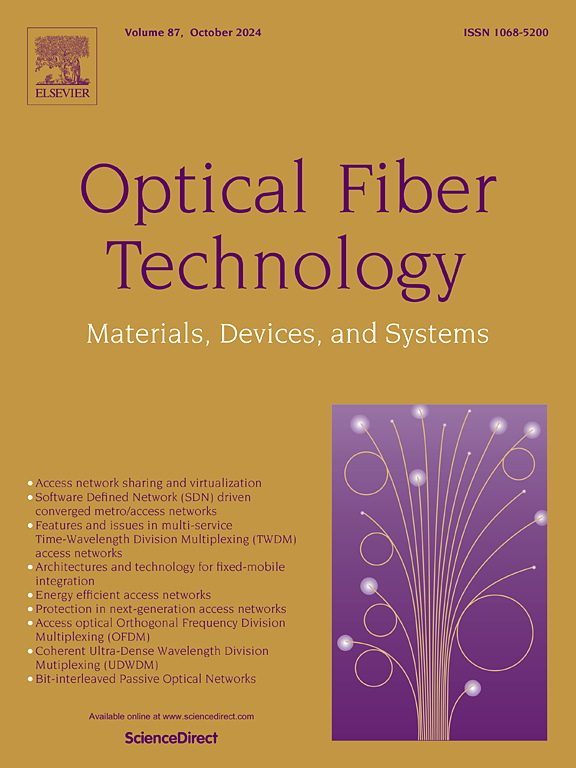用于低频振动检测的大动态范围双光纤光栅加速度计
IF 2.6
3区 计算机科学
Q2 ENGINEERING, ELECTRICAL & ELECTRONIC
引用次数: 0
摘要
低频和超低频振动波监测在结构健康监测、地震工程、环境振动控制、机械设备维修、地质灾害监测等方面有着广泛的应用。提出了一种用于检测振动波的大型动态双光纤光栅加速度计。首先,从理论上推导了传感器的力学性能。随后,利用仿真软件对其动态特性进行分析,验证理论推导,并提供仿真数据,为物理制造和实验测试提供支持。随后,构建物理样机,建立测试平台,对传感器的各项性能指标进行校准,并对测试数据进行分析。结果表明,所研制的传感器可以捕获0.05 ~ 30 Hz的振动波,在0.05 Hz频率点检测加速度低至0.0005 g,动态范围为77.61 dB。这种在低频和超低频段检测低加速度的能力有望解决FBG传感器在低频微振动监测方面的现有空白。本文章由计算机程序翻译,如有差异,请以英文原文为准。
Large dynamic range dual FBG accelerometer for low-frequency vibration detection
Monitoring low-frequency and ultra-low-frequency vibration waves has wide-ranging applications in structural health monitoring, seismic engineering, environmental vibration control, mechanical equipment maintenance, and geological disaster monitoring. This study presents a large dynamic dual-FBG(Fiber Bragg Grating) accelerometer designed for detecting vibration waves. Initially, the mechanical properties of the sensor are theoretically derived. Subsequently, simulation software is utilized to analyze its dynamic characteristics, verifying the theoretical derivations and providing simulation data to support physical fabrication and experimental testing. Following this, physical prototypes are constructed, and a testing platform is established to calibrate various performance metrics of the sensor, followed by an analysis of the test data. The findings show that the developed sensor can capture vibration waves between 0.05 and 30 Hz, with detection acceleration as low as 0.0005 g at the 0.05 Hz frequency point and a dynamic range of 77.61 dB. This ability to detect low acceleration in the low-frequency and ultra-low-frequency bands is expected to address the existing gap in low-frequency micro-vibration monitoring using FBG sensors.
求助全文
通过发布文献求助,成功后即可免费获取论文全文。
去求助
来源期刊

Optical Fiber Technology
工程技术-电信学
CiteScore
4.80
自引率
11.10%
发文量
327
审稿时长
63 days
期刊介绍:
Innovations in optical fiber technology are revolutionizing world communications. Newly developed fiber amplifiers allow for direct transmission of high-speed signals over transcontinental distances without the need for electronic regeneration. Optical fibers find new applications in data processing. The impact of fiber materials, devices, and systems on communications in the coming decades will create an abundance of primary literature and the need for up-to-date reviews.
Optical Fiber Technology: Materials, Devices, and Systems is a new cutting-edge journal designed to fill a need in this rapidly evolving field for speedy publication of regular length papers. Both theoretical and experimental papers on fiber materials, devices, and system performance evaluation and measurements are eligible, with emphasis on practical applications.
 求助内容:
求助内容: 应助结果提醒方式:
应助结果提醒方式:


